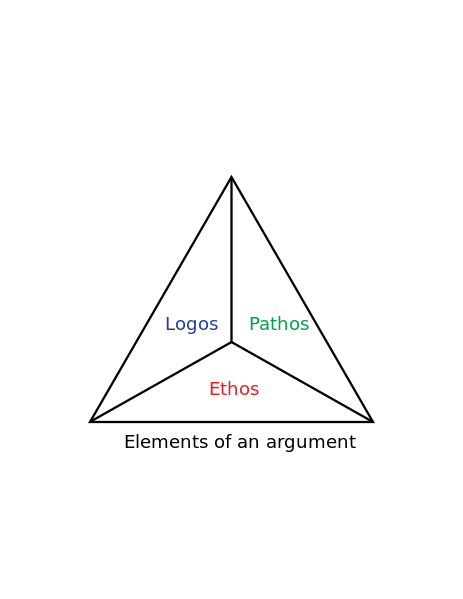 |
| Nanodudek. "Three Elements of an Argument" 08/08/2013 via Wikipedia Creative Commons Attribution-Share Alike 3.0 Unported License |
Appeals to credibility or character:
Which items on the bullet list on pg. 183 are present?
- References to credible sources
- Tone
- Word Choice
- Appeals to values shared by the audience
The above appeals to credibility all work towards the same goal. They create a very professional tone that appears to be well researched and understood by the author. The author has used these techniques to create a convincing piece that breathes professionalism without letting his own biases intrude on the content.
Appeal to Emotion:
- Emtionally compelling narrative
- Images
These are the only two examples of pathos that I could find for the article. Because the article is not trying to convince the reader of a position on the subject, it does not use emotion based arguments to push its point. Any more appeals to emotion would cause the author to lose some credibility.
Appeal to Logic
- Interviews
- Expert Opinions
- Effective organization of sentences, paragraphs, ideas, images, etc.
The author's first and foremost goal of the article is to sound logical. The information is presented in a logical fashion and approaches to subject matter from all possible angles. The author avoids any logical fallacies throughout the piece. The overall effect is an easy-to-follow article that is well supported.
No comments:
Post a Comment